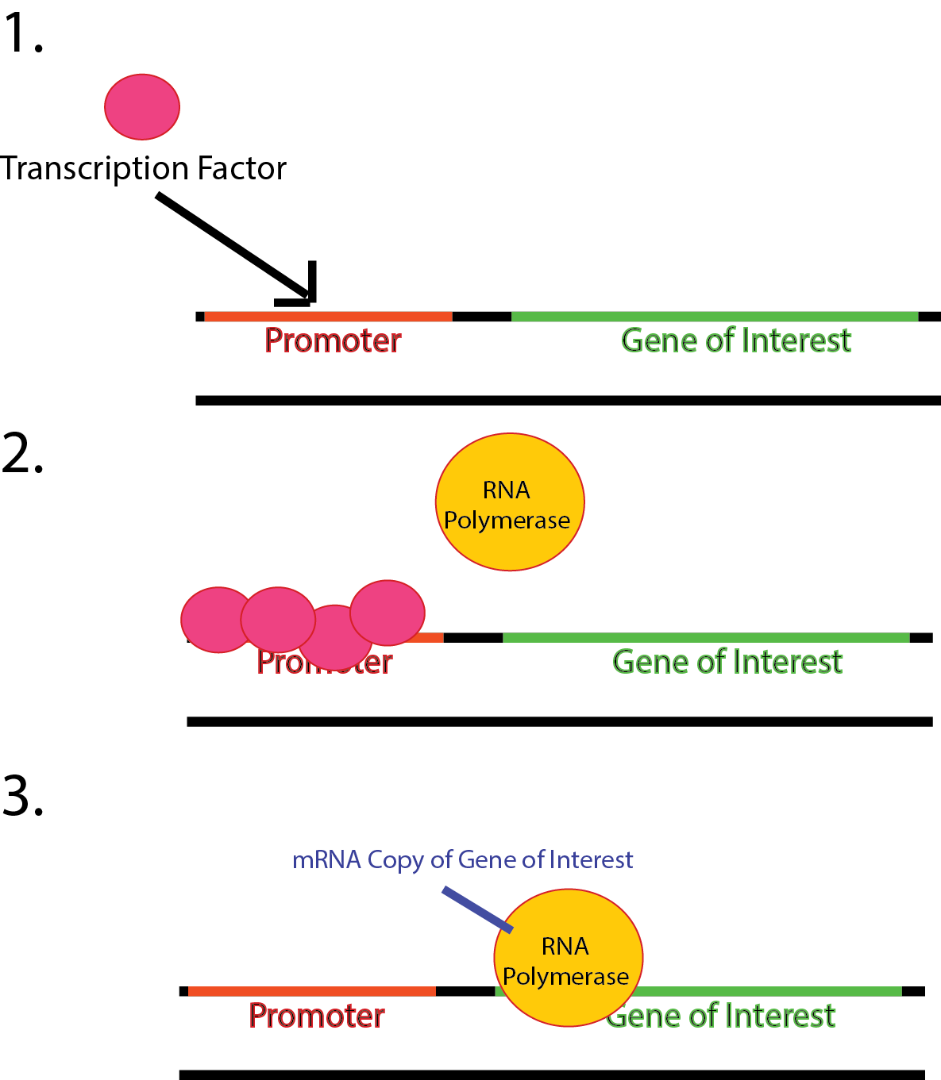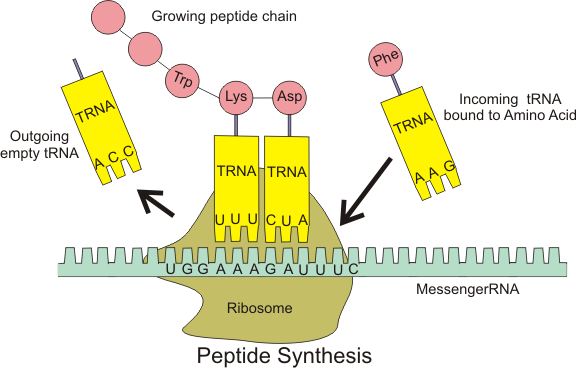Preface
In previous posts we have discussed:
Part 1: The Basics of DNA
Here we discussed a bit about what DNA is, the molecule itself and an overview of what its use is in the cell.
Part 2: DNA Replication
Here we went into a bit more detail about the protein mechanisms by which a new copy of DNA gets created
Today we will talk about how the cell takes the information contained within DNA and turns it into a product which performs a function in the cell (which will be called a protein, could be an enzyme, a protein which performs a chemistry function, or just a structural protein).For the purpose of this I will discuss things from the context of how a bacteria does this process as in eukaryotes such as our selves the level of complexity and number of proteins involved is much much greater.
So! DNA is replicated and we want to make a protein, the first step is:
Transcription
Transcription refers to the conversion of a specific sequence of DNA (DeoxyRibonuclieic acid) to RNA (RiboNucleic Acid). The difference between a DNA base and an RNA base is just one -OH group, but to the cell that changes everything! The RNA polymer is only a copy of one of the two strands of DNA, so it is single stranded.
The section of the DNA that the cell wants to copy and later turn into a protein is called a Gene, there is a regulatory region of the DNA that occurs before any gene sequence called a promoter.
A promoter is basically a sequence of varying length and sequence (depends on the organism) to which some proteins called transcription factors (they have specific names like sigma factors etc.) will bind (Figure 1-1)
Figure 1: Transcription

Source (Self)
These transcription factors signal to another protein called an RNA polymerase that "Hey, weve got a gene over here we need transcribed into RNA." The RNA polymerase is an enzyme not unlike a DNA polymerase (which we discussed in Part 2) in that it links together nucleobases. It differs in that it is able to do this process denovo (like a primase, also discussed in part2), and uses RNA bases rather than DNA bases.
The transcription factors recruit the RNA polymerase to the beginning of the gene (Figure 2-1) and the polymerase looks for a particular codon (discussed in Part 1) called a start codon (it has the DNA sequence ATG, and encodes for the protein Methionine). After identifying the start codon it begins its synthesis (Figure 1-3) of the RNA segment, and goes along until it encounters a stop codon (Sequences: TAA TGA or TAG). Now we have a piece of RNA which undergoes some post processing (it gets a cap of A's placed on one end etc. i will not discuss that level of complexity). After processing it is called a mature mRNA or messenger RNA.
The cell now wants to use this mRNA of our gene of interest and turn it into a protein, so it can be used! This happens through a process known as...
Translation
Translation is the process by which an mRNA sequence is converted into its respective protein sequence. This process happens in a giant cellular processing complex called the ribosome. The ribosome is composed of a few different parts (2 different long RNA molecule subunits, as well as a variety of protein subunits) It uses specialized RNA molecules called tRNA or transfer RNA to read the incoming mRNA template and bring together the correct Amino Acids to construct a protein (Figure 2).
Figure 2: The Ribosome Acvite Site

Source: Wikipedia
Here is where codons (discussed in Part 1) become more important. Each of these tRNA's matches up with a codon (the three base code of DNA/RNA) and it brings in the correct amino acid based upon this codon sequence. As the tRNA's are brought in the ribosome assembles the amino acids together via peptide bonds, analogously to how the DNA and RNA polymerases do it for the assembly of nucleobases.
So we have a fully intact, folded globular protein, with an amino acid sequence that corresponds to the codons from the gene it was transcribed from! We have taken the information stored in the genetic material (DNA) and turned it into a small machine that can perform a function for the cell (protein)!
Upcoming Topics
What Happens when DNA Mutations Arise and How are They Fixed?
What is Cancer and what are some causes?
Genetic Modifications (eg. How are GMO Foods Made?)
Other Topics of Interest Suggested By YOU
